KSysGuard/zh-cn: Difference between revisions
m (Created page with "==概述==") |
m (Created page with "'''系统监视器(KSysGuard)'''设计成无需使用者特别设置即可进行简单的进程控制 - 默认的通常完全够用。有两张工作表 - <menuchoice>系统...") |
||
| Line 6: | Line 6: | ||
==概述== | ==概述== | ||
''' | '''系统监视器(KSysGuard)'''设计成无需使用者特别设置即可进行简单的进程控制 - 默认的通常完全够用。有两张工作表 - <menuchoice>系统负载页</menuchoice>(上面是图表)和<menuchoice>进程表</menuchoice>。 | ||
===System Load=== | ===System Load=== | ||
Revision as of 14:30, 17 November 2010
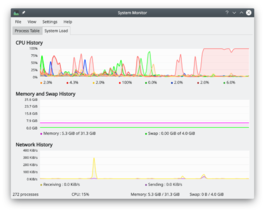 |
追踪控制系统进程. |
概述
系统监视器(KSysGuard)设计成无需使用者特别设置即可进行简单的进程控制 - 默认的通常完全够用。有两张工作表 - (上面是图表)和。
System Load
The screen has three displays, each representing one of the load considerations - CPU History, Memory and Swap History and Network History. If you hover over the title-bar of each section you will see detailed analysis together with a colour-key.
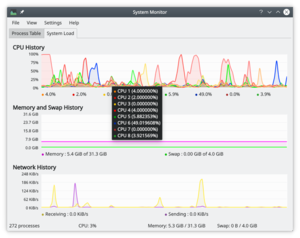 |
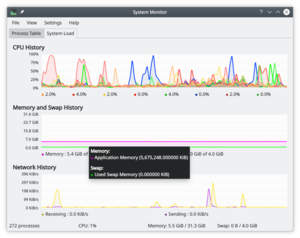 |
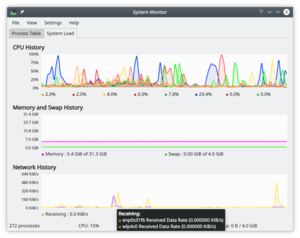 |
The Process Table
The view by default gives you an alphabetical order list of all processes running. Clicking on any column header will make this the sort column. If you have a runaway process you will find the view most useful. You can also elect to see sub-sets of the processes, by owner or program.
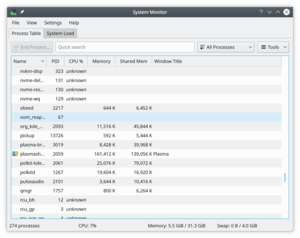 |
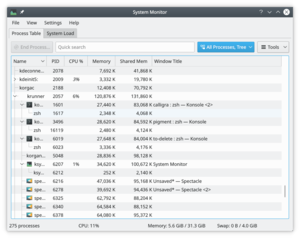 |
Hints and Tips
Ctrl + Esc brings up the Processes part of KSysGuard, which is very helpful when you are trying to find which application is using too many resources.
In KRunner (Alt + F2 or from a right-click on the desktop) there is a tiny icon to the left of the entry bar - it looks like a microwave oven - that also brings up the Process Table.
